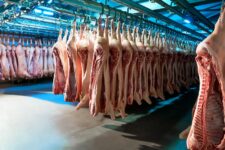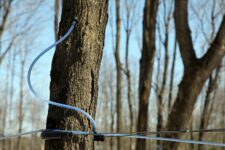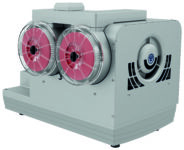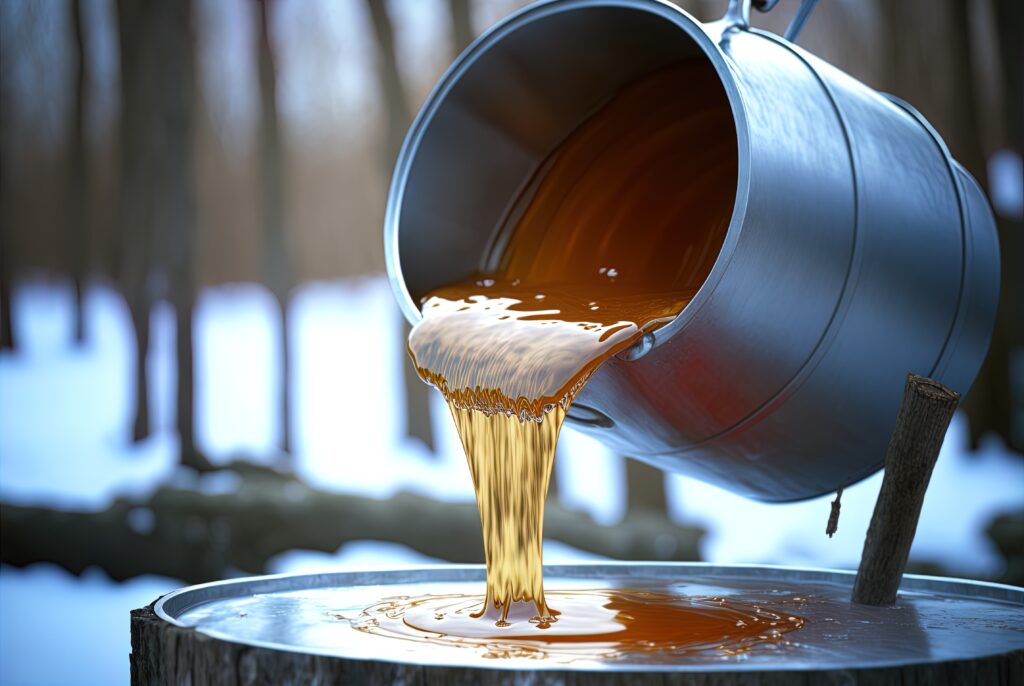
No two sugar bushes are ever the same, and no single sugar bush is the same season after season. So, whether you’re running just a few lines on leased land or dozens of laterals across miles of sugar bush, an effective vacuum keeps the sap flowing when it counts. Understanding how sap flows on your land can take years, but investing in essential equipment like vacuum pumps means making smart, business-based decisions today.
In this article, we examine some of the critical factors that go into how to choose a vacuum pump for your operation. This includes the number of taps and the terrain they sit on, the distribution of your sugarbush parcels, and the lateral lengths and mainline sizes you are running on your land.
We’ll explain how to choose the right size pump to maximize sap yield while ensuring optimum flow rates, and how to scale for growth without overspending on unnecessary capacity. We’ll also consider the best combination of pump technology, capacity, moisture protection, and cold-weather performance for your needs.
Read on to learn more about smart vacuum pump choices that will pay off season after season.
THE RIGHT PUMP FOR YOUR FARM: 5 CRITICAL FACTORS
Adding vacuum extraction equipment to any sugaring operation has been shown to boost production by anywhere between 50% and 200%. In recent years, the increased use of high vacuum equipment has further boosted production and allowed farmers to open up what was once at best marginal sugar bush terrain.
A big part of the success of the “vacuum revolution” in maple sugaring has been driven by the arrival of smaller, more efficient pumps from manufacturers like Becker. With variable-speed drives and compact, lower-maintenance motors, these pumps make it possible to optimize production while minimizing power consumption, maintenance, and equipment wear.
It’s also now possible to match pump capacity and design to the specific needs of a particular sugar bush or even a single mainline. Here are the most important factors to consider when choosing a pump for your operation.
1. NUMBER OF TAPS
Sugaring operations run from small “hobby” installations of less than 500 taps to major commercial operations with 30,000 taps or more. The size of your operation is the single biggest factor in determining the design and capacity of the vacuum pumping equipment you choose.
The number of connected taps is directly proportional to both the maximum rated capacity and horsepower of the pumps you will require and the amount of air leakage you should expect across your system. It is the most useful metric for figuring out the amount of raw vacuum power you will require.
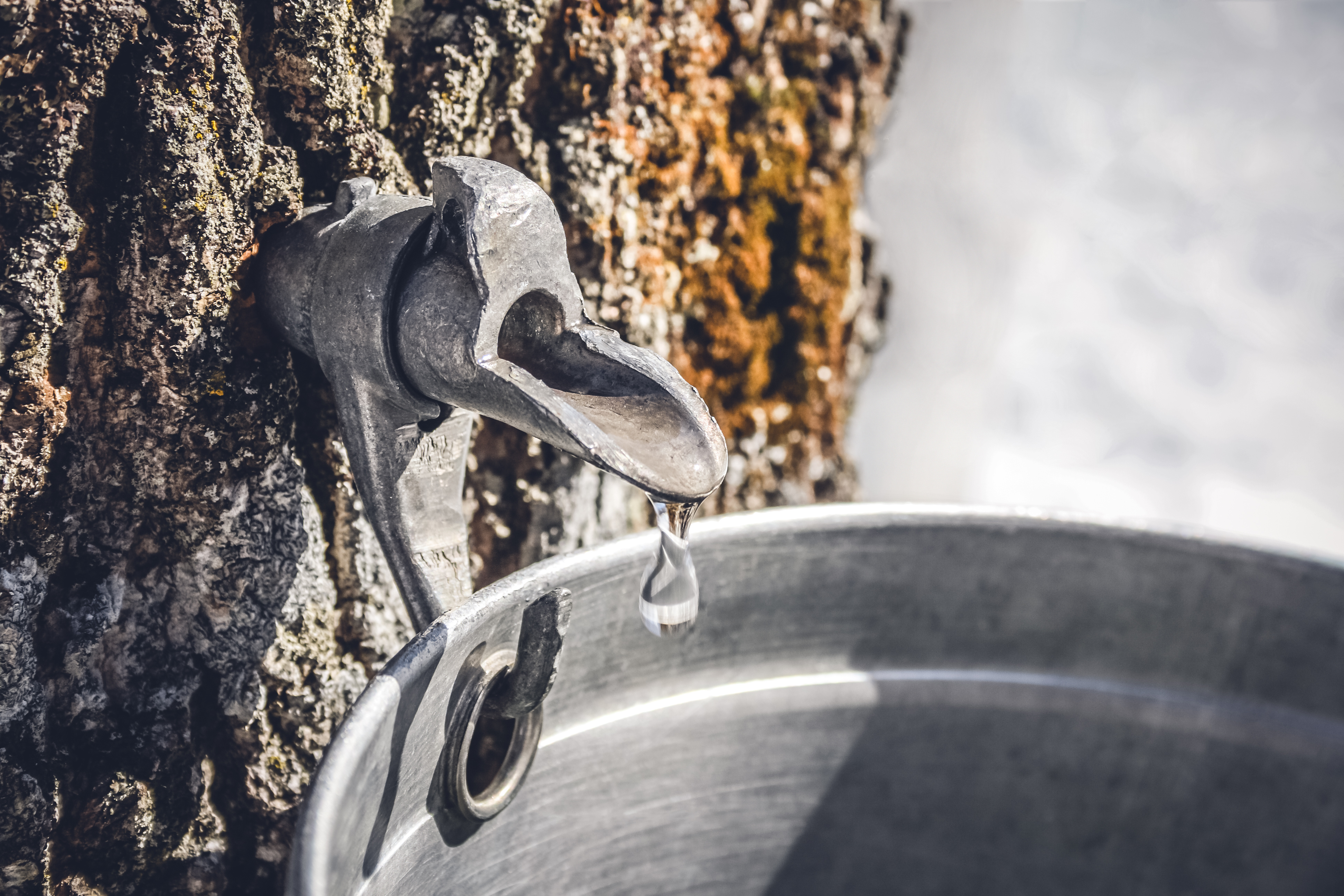
2. DISTRIBUTION
That said, practical considerations will determine where vacuum pump capacity is actually needed. This includes the size of individual gathering systems and of course the distribution of your sugar bush properties.
While the biggest commercial operation may require only a few big pumps to tap large multi-lateral systems on extended, contiguous lands, smaller operators may run just a few lines on smaller leased sugar bushes, often miles apart.
This is particularly true of farmers in the northeastern U.S. Here, small operations may run only 300-3,000 taps across several parcels. They will often rely on small, ultra-efficient pumps like Becker’s O Series units to make these operations financially viable.
3. TERRAIN
Vacuum pump requirements and the relationship between pump capacity and tap count will also be affected by the terrain on which your sugar bushes lie. Flows from trees on steeper slopes will naturally be stronger, while flatter lines or any terrain that lies over a ridge will increase the work your pumps will need to do.
Other factors, including exposure to wind chill, ice, and sunlight will also affect freeze-thaw rates and timing. While there is no substitute for experience in understanding how terrain affects sap flows on your land, an efficient and cost-effective vacuum pump system needs to have the capacity to deliver effective suction to every tap hole on your system.
4. LATERAL LENGTH & SIZE
Whether adding a pump to existing lines or building a system from scratch, lateral size and length need to be properly scaled to your sugarbush area to ensure efficient sap flows.
Narrower mainlines and longer laterals increase line friction, adding dramatically to the work your pumps must do. However, bigger mainlines require higher capacity pumps with larger inlet valves, while limiting the area each gathering system serves might mean you need to buy two smaller pumps rather than one larger one.
5. PRODUCTION GOALS
At the end of the day, adding more vacuum is about increasing sap yield. Higher vacuum levels mean investing in more pump capacity and more work managing leaks and pressure loss, as well as potentially shorter tap hole life, but it also means more sap in the tank at the end of the season and a shorter return on your investment in pumping equipment.
VACUUM CAPACITY VS. PUMP FLOW
In choosing the right pump to meet all these factors, it is important to understand the two main measurements used to rate the performance of any vacuum pump.
VACUUM CAPACITY
This is a measurement of the total amount of air a pump can pull out of your tubing system. It’s usually expressed in inches of mercury (Hg). This is essentially the maximum amount of “suck” a vacuum pump can produce under ideal conditions. Many Becker pumps designed for maple sugaring now produce maximum vacuum levels of up to 29.92” HgV.
AIRFLOW CAPACITY
This is the ability of a pump to continuously remove a volume of air in a particular unit of time and is usually measured in cubic feet per minute (CFM). Pumps are rated at a particular CFM flow at a given pressure level. This is because tubing systems are not sealed systems, and pumps need to work to overcome air leakage at many points throughout the system in order to maintain a steady vacuum.
Understanding how flow and vacuum work together is important to figuring out the right pump for your sugaring operation. While a pump may deliver a maximum capacity of 30” Hg or more, its rated flow capacity is measured at a lower vacuum level (usually at 12” or 15” HG). Actual flow performance falls off dramatically as the pump approaches its maximum vacuum level.
Pumps with higher rated flow capacity, as well as the ability to deliver effective flow at higher vacuums, require more powerful motors and cost more to run.
WHAT SIZE PUMP DO YOU NEED?
Pump flow capacity is directly proportional to the size of your gathering system. The right pump for your system is one able to maintain the desired vacuum on your system by pumping out air fast enough to compensate for the rate of leakage across your system.
A common industry rule of thumb suggests that leak rate rises 1-2 CFM for every tap you have on your system. This means that a tubing system with 5,000 taps would require a pump with a capacity of at least 50 CFM to maintain a vacuum at its rated capacity.
On top of this, you would want to have additional capacity to account for:
- Longer or narrower tube lengths
- Flatter or variable terrain
- Higher vacuum to boost production
- Sap blockages and airlocks
Line friction is a major consideration, especially as sap viscosity varies with temperature. Studies suggest friction can reduce pump efficiency by 50% or more within the first 500 feet of tubing, while challenging terrain can have a similar effect on flow rates. While the ideal solution is to design your gathering system to maximize efficiency with larger mainlines and shorter laterals, this is not always possible.
With this in mind, many producers would choose a pump with at least 60 CFM rated capacity for this 5,000 tap application — and more if they wanted to run their system at a higher vacuum to boost flows and increase sap yields. Research has also shown that tap hole pressures of up to 15” consistently increase sap yield, but delivering this pressure at the tap means significantly increasing vacuum capacity at the pump.
However, adding vacuum capacity comes at a high cost. Some researchers estimate boosting the vacuum level on a gathering system from 12” to 18” inches requires a 50% increase in overall system flow capacity. That requires installing, operating, and maintaining larger pumps with higher-rated air flows, as well as the labor and equipment costs needed to tackle higher levels of line leakage.
WHAT PUMP FEATURES DO YOU NEED?
Pump flow and vacuum capacity are not the only considerations when buying a pump. You also need to consider the lifetime cost of the pump in terms of its performance, durability, and maintenance costs. Here are some important factors to consider.
COLD START, DURABILITY & CONTINUOUS OPERATION
It’s important to choose equipment that operates well in the extreme conditions common in our industry. It pays to keep equipment close to the trees to reduce the lateral length, but that often means exposing pumps to harsh outdoor conditions.
Look for equipment with great cold start performance and efficiency cooling to ensure better long-term durability. Becker purpose-designs its O and U series pumps for continuous operation and start-stop performance in the toughest conditions.
MOISTURE PROTECTION
Managing the natural moisture and humidity that comes with maple tree sap is one of the biggest challenges for sugaring pump equipment. Look for pumps with enhanced oil separation or gas ballast protection, such as Becker’s professional U Series equipment, or prevent contamination altogether by choosing from our extensive range of oil-less vacuum pumps.
LOW MAINTENANCE
Regular maintenance is essential to ensure your pump starts clean at the beginning of the season and keeps running through the Spring. You can minimize your trips out to the woods by choosing low-maintenance Becker oil-flooded or oil-less pumps that will never run dry and require only a minimum of end-of-season maintenance. We even provide ready-to-go maintenance kits to speed up your Spring clean up.
WHICH BECKER VACUUM PUMP IS RIGHT FOR YOU?
Investing in critical vacuum pump equipment is a complex decision, but choosing Becker is always a good decision. Our robust, reliable pumps are designed and built to keep running in the harshest conditions when it matters and clean up quickly when the season is done.
Whether you’re a full-scale commercial operation looking to make your less accessible sugarbush pay off or a local producer tapping leased land or your own farm, we have a Becker pump that will let you get more out of your trees. Choose from our full range of powerful, versatile oil-flooded, and oil-free extraction vacuum pumps.
O SERIES
Designed for smaller sugaring operations, Becker’s O Series pumps offer commercial-grade pump performance in a small package. With nominal open flows of up to 16CFM, our three larger O Series units are rated to 29” HgV for effective vacuum on gathering systems with as few as 400 and as many as 1,750 taps.

That makes them perfect for drop-off deployment during season-long operations at smaller sugarbushes. These hard-working fully lubricated pumps deliver best-in-class performance, especially at the high end of the vacuum curve, to keep your lines flowing longer. And, our dual-stage oil separators offer industry-leading moisture protection and easy end-of-season maintenance.
| O Series – Selected Models for Maple Sugaring | ||||
|---|---|---|---|---|
| Model | Nominal CFM | Inlet Size | Max. Vacuum (HG) | Tap Range |
| O 5.10 | 7.4 | ¾” | 29 | 370-740 |
| O 5.16 | 11.2 | ½” | 29 | 560-1,120 |
| O 5.25XLK | 17.6 | 1” | 29 | 880-1,760 |
U SERIES
From family farmers to full-scale commercial operations, Becker U Series pumps are designed to meet you where you work with industrial strength, performance, reliability, and surprising affordability. With units clearing anywhere from 30 to 430 nominal CFM and unrivaled high-vacuum performance, our pumps deliver real results and return on investment for farms of anywhere from 1,500-40,000 taps
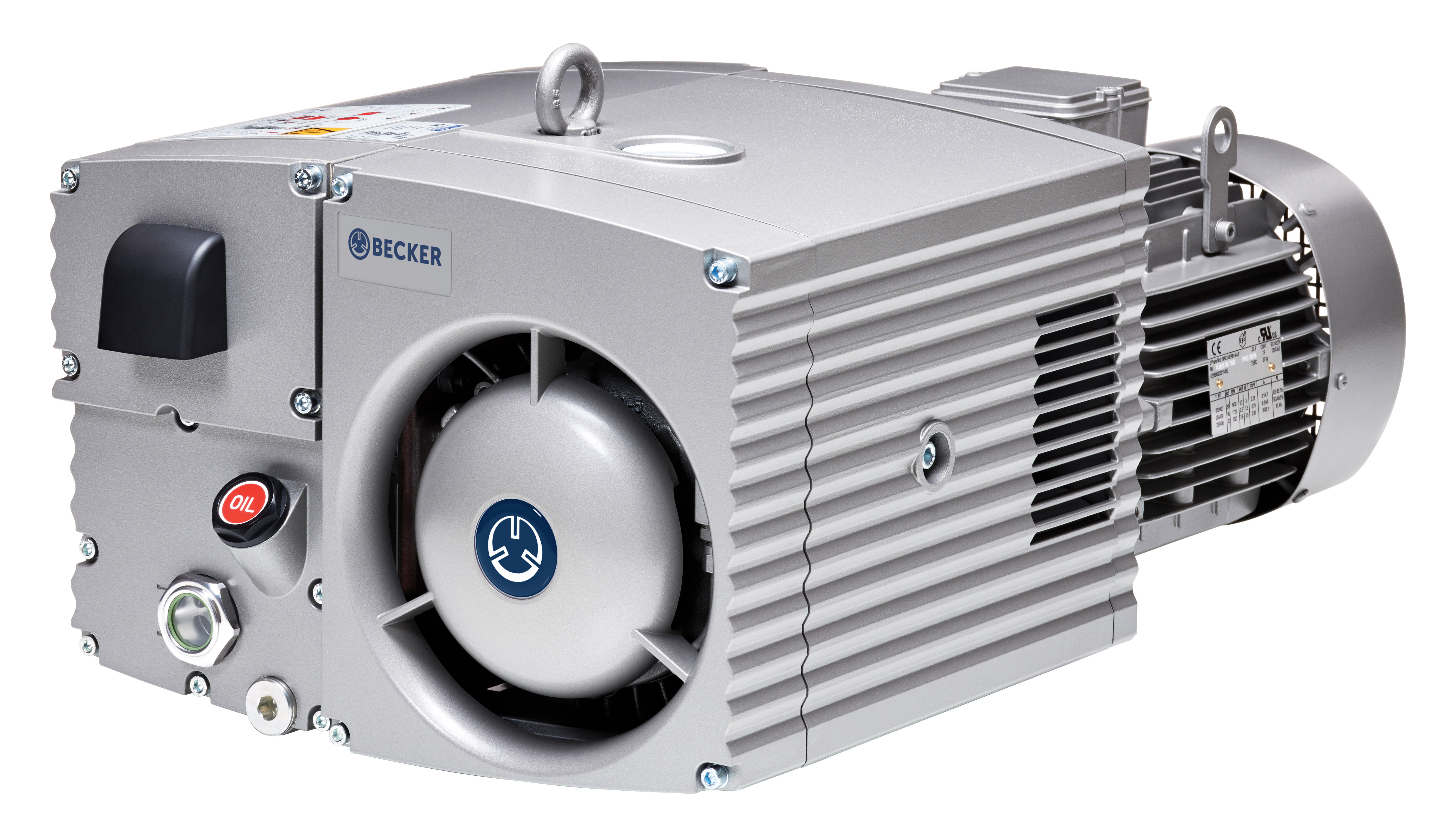
Choose from a range of inlet sizes to match your mainlines, and every U pump comes standard with the large Gas Ballast to ensure any moisture that enters is removed quickly and efficiently. All of the U pumps can also operate on either single or three-phase power. You’ll get the same low-maintenance season-long oil-flooded reliability and cold start performance as our O Series units with the capacity you need to drive extra production or unlock new acreage.
| U Series – Selected Models for Maple Sugaring | ||||
|---|---|---|---|---|
| Model | Nominal CFM | Inlet Size | Max. Vacuum (HG) | Tap Range |
| U 5.45 | 31.5 | 1¼” | 29 | 1,500-3,150 |
| U 5.71 | 50 | 1¼” | 29 | 2.500-5,000 |
| U 5.101 | 70 | 1¼” | 29 | 3.500-7,000 |
| U 5.166 | 116 | 2” | 29 | 5,800-11,600 |
| U 5.201 | 141 | 2” | 29 | 7,050-14,100 |
| U 5.300 | 211 | 2” | 29 | 10,550-14,100 |
| U 4.400 | 299 | 3” | 29 | 15,000-30,000 |
| U4.630 | 430 | 3” | 29 | 21,500-43,00 |
BECKER OIL-LESS PUMPS
For maximum water and vapor protection and the lowest maintenance needs, choose from Becker’s wide selection of dry-running KVT and VTLF oil-less rotary vane pumps and BCV oil-less hook and claw pumps. Ideal for mid-sized operations with optimized gathering systems, these units deliver efficient, affordable mid-range vacuum performance with nominal air flows ranging from 40 to over 190 CFM.
Choose from selected BCV, VTLF, and KVT units for an effective, low-maintenance vacuum for gathering systems of anywhere between 2,000 and 20,000 taps.
| KVT Series – Selected Models for Maple Sugaring | ||||
|---|---|---|---|---|
| Model | Nominal CFM | Inlet Size | Max. Vacuum | Tap Range |
| KVT 3.60 | 39 | 1 | 27 | 1,950-3,900 |
| KVT 3.80 | 48 | 1 | 27 | 2,400-4,800 |
| KVT 3.100 | 69 | 1.5 | 27 | 3.450-6,900 |
| KVT 3.140 | 95 | 1.5 | 22 | 4,750-6,900 |
| VTLF Series – Selected Models for Maple Sugaring | ||||
|---|---|---|---|---|
| Model | Nominal CFM | Inlet Size | Max. Vacuum | Tap Range |
| VTLF 2.200 | 130 | 2 | 24 | 6,500-13,000 |
| VTLF 2.250 | 170 | 2 | 24 | 8,500-17,000 |
| VTLF 2.250 SK | 170 | 2 | 27 | 8,500-17,000 |
| BCV Series – Selected Models for Maple Sugaring | ||||
|---|---|---|---|---|
| Model | Nominal CFM | Inlet Size | Max. Vacuum | Tap Range |
| BCV 100 | 70 | 2 | 28 | 3,500-7,000 |
| BCV 150 | 106 | 2 | 26 | 5,300-10,600 |
| BCV 300 | 193 | 2 | 25.5 | 9,650-19,300 |
CHOOSE SMART, MAKE IT BECKER
Whatever the size of your sugar bush operation, choosing vacuum pump equipment is a major decision. Vacuum Pumps work best when optimized to your farm’s size, terrain, and the size and extent of your gathering system.
Becker vacuum pumps are designed to run great right off the shelf but work even better when we can work with you to develop a customized solution to your specific needs. We’ll help you select the ideal Becker unit for your operational needs and budget and help you develop an integrated solution that will boost production today and deliver returns for seasons to come.
Click below to learn more about how our customized industrial vacuum pump applications can help your sugaring operation hit the sweet spot.



